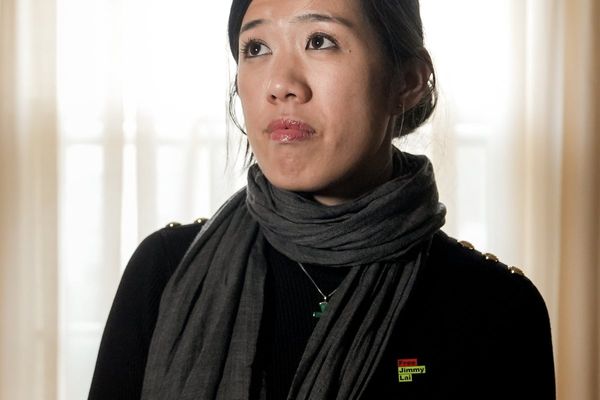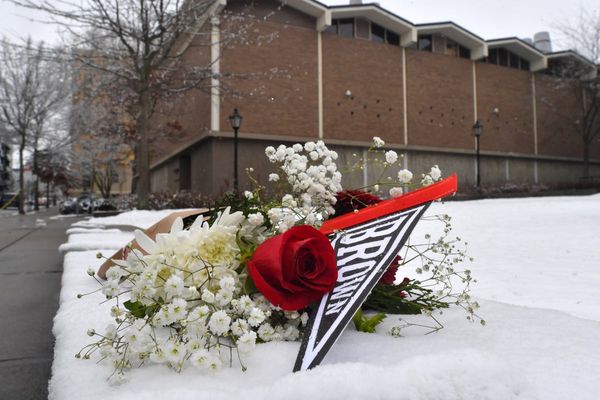
In architecture, the biggest civic visions are born in the smallest form. Sometimes, the most powerful ideas can fit neatly on a table.
The scale model is a crucial step in the journey from concept design to skyline. Anexhibition opening in Sydney on Sunday pays tribute to the creative role these fragile yet tangible miniature worlds play in shaping some of our most well-known landmarks.
The Civic Vision exhibition from Foster + Partners architects is a part of the annual Sydney Open, a premier architecture event, which has been offering a behind-the-scenes view of design processes for 21 years. This year’s event will open the doors to 57 buildings and spaces, contrasting new builds with treasured heritage sites.
The scale model exhibition showcases seven decades of work in the field of hi-tech architecture, sustainable design, and striking civic structures made of glass and steel.
The architecture firm this year designed the winning national memorial to Queen Elizabeth II, a translucent bridge to be built in London’s St James’s Park, inspired by the diamond fringe tiara the late monarch wore on her wedding day.
It was also part of the Metro consortium, which designed five new train stations in Sydney that won the 2025 NSW architecture medallion.
The Civic Design exhibition is the first of its kind in Australia, drawn from a major Norman Foster retrospective staged at the Centre Pompidou in Paris in 2023. Norman Foster founded Foster + Partners in 1967.
Housed in the firm’s Sydney studios, the Parkline Place tower, a new 39-storey tower rising above Gadigal station, the exhibition features an array of scale models ranging from the 1980s Hong Kong and Shanghai Bank – a handbuilt construction of timber and metal – to a tiny, meticulously detailed model of the proposed new Old Trafford stadium, complete with 50,000 minute human spectators.
Sign up: AU Breaking News email
These models are far more than an architectural marketing gimmick; they are a critical tool in the design process.
“The model is a tool for understanding how a building will look and feel,” says Katy Harris, Foster + Partners’ London-based head of communications, who walked the Guardian through the exhibition earlier this week.
“Architects have to think in 3D … that’s why physically making models is incredibly important to understand whether you have designed correctly.
“But a tangible, three-dimensional model can also be essential for clients who don’t have those sensibilities of understanding a two-deep drawing or a plan. They can’t understand it. Give them a model, they get it.”
Those 50,000 handmade miniature Manchester United fans were created specifically to help the client understand the scale and atmosphere of the proposed building, she says.
The collection tracks the evolution of modelling, revolutionised by the introduction of 3D printing. But that hasn’t supplanted the role of skilled human model makers – the firm still employs about 60 model makers.
Viewing the world in miniature takes people back to childhoods spent making kit models and building with Lego, Harris says. The art of model making is more than just a professional tool; it is a universal language that allows anyone to grasp the sheer scope and complexity of the architect’s vision.
The Stansted Airport (1991) model displays in miniature a watershed moment in infrastructure design; by putting all mechanical services underneath the concourse – effectively turning standard airport design upside down – the roof was freed up, allowing natural light to stream in and aiding passenger orientation, a concept Harris says has since been “copied by pretty much every new airport design around the world”.
The model of Trafalgar Square in the heart of London demonstrates the dramatic impact of a simple urban intervention – replacing a traffic-choked roundabout with a vast stepped pedestrian plaza – can transform public amenity.
A closeup view of the 30 St Mary Axe model, known to most Londoners as the Gherkin, reveals a complex ventilation system, where spiralling bands of atria enable a natural flow of air, making it an early example of an ecological high-rise. The model, almost a piece of sculpture in itself, gives the viewer a level of detail that would be impossible to see or fully comprehend when looking from a distance at the building itself on the London skyline.
At a local level, there is a model for Deutsche Bank Place, which with its distinctive offset core has been making its mark on the Sydney skyline for the past 20 years, and one of the new Parkline Place, illustrating the concept of transport-oriented development seamlessly integrating commercial towers with major transit hubs like Gadigal station.
The Foster + Partners exhibition itself is a key stop in a broader Sydney Open program that celebrates the city’s architectural identity.
Visitors to Sydney Open can also explore Bundarra in Surry Hills, Australia’s first external diagrid structure at One Shelley Street at King Street Wharf, as well as the new aerodynamic commercial tower 1 Elizabeth, integrated with the Sydney Metro Martin Place station.
The conversion of the old Darlinghurst police station into Qtopia Sydney, the world’s largest centre for queer history and culture, has also been opened for visitors, as have the Sydney Observatory, the Mortuary Station, and the archaeological Parbury Ruins – a 1820s dockworkers home unearthed during the construction of a residential apartment block in Millers Point in 2000.
The Sydney Open day, where the greatest number of buildings are open to the public, is on Sunday 2 November, but other selected events will be running throughout November and December
The Foster + Partners | Civic Vision exhibition is open to Sydney Open ticketholders from Sunday 2 November to 21 December, at the Parkline Place tower, level 2 Mezzanine







